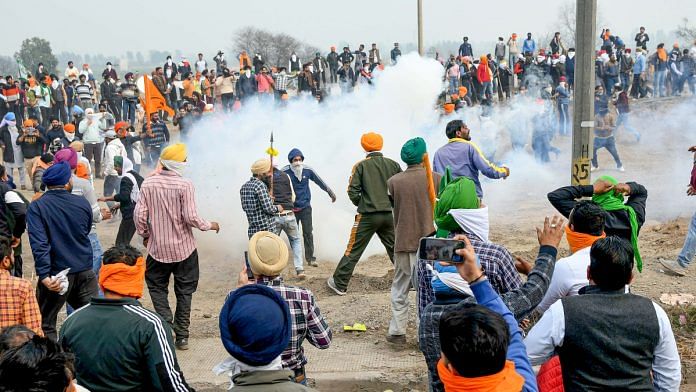Sealed borders and seething farmers, dramatic visuals of tractors, tear gas, and traffic jams. There’s a sense of déjà vu as convoys of farmers once again trundle toward Delhi, this time to protest, primarily, for better minimum support prices. What’s different now is the timing—the protest comes right ahead of the 2024 Lok Sabha elections.
For most Delhi residents, the images evoke weariness more than anything else. But for opposition leaders, they spark a flicker of hope. Congress leader Rahul Gandhi even halted his Bharat Jodo Yatra 2 midway and rushed from Jharkhand to Delhi to join the agitation. Such moves may get some likes on social media, but if opposition leaders are expecting any serious political mileage, they are likely to be disappointed.
Farmers’ issues have failed to sway polls
Ahead of the 2023 elections in the Hindi heartland state of Madhya Pradesh, ruled by the BJP almost continuously for two decades, farmers’ grievances were a major poll issue. Yet, the BJP secured a thumping majority, winning 163 of the 230 assembly seats. It was a similar story in Rajasthan, where the BJP won 115 out of 200 seats.
In MP and Rajasthan, about 70 per cent and 62 per cent of the population respectively work in agriculture, so clearly the farmers in these states either brought the BJP to power or re-elected them.
The CSDS post-poll studies in these states shed further light on this. In the Madhya Pradesh survey, only 22 per cent of respondents said that they believed the condition of farmers had deteriorated in the previous five years, while 34 per cent claimed it had actually improved.
Similarly, in the Rajasthan post-poll survey, only 13 per cent of people said that the situation of farmers had worsened and more than 33 per cent responded that it had improved.
In Uttar Pradesh, one of the epicentres of the earlier agrarian protest over three (now repealed) farm laws, the trends were similar. The post-poll survey for the 2022 UP assembly election showed that 42 per cent of respondents said farmers’ conditions had worsened. Yet, the Yogi Adityanath-led BJP government was not only re-elected, its vote share improved to 41.29 per cent, up from 39.67 per cent in 2017. And these elections concluded just a few months after the farmers’ protest 1.0 ended in December 2021.
The 2019 Lok Sabha elections saw similar patterns. A June 2019 brief published by the Institute of South Asian Studies of the National University of Singapore, concluded that “despite distress in the farming community”, the BJP successfully manoeuvred to get the support of farm voters across the Hindi heartland, defying all its doomsayers.
Also Read: ‘Queer for Palestine’ helps neither queer nor Palestine. It’s just a cry for attention
A need for more dialogue, better questions
I am not saying that the farmers outside Punjab are in great shape. Quite the opposite, in fact. According to data from the Ministry of Statistics and Programme Implementation (MoSPI), an average Indian agricultural household earns an income of Rs 10,218 per month from various sources. In Punjab, however, this figure exceeds Rs 26,000—the highest in the country among large agrarian states (counting smaller states, the average income for Meghalaya was higher at Rs 29,000). Clearly, most farmers are not earning enough to afford the living standards that most aspire to.
Why, then, are farmers not expressing their discontent through the ballot box?
In my view, the richest farmers need to convince the poorer farmers that certain policies are harmful for them and thus influence their voting pattern. Only then can real ‘Kisan Ekta’, or farmers’ unity, be put to an acid test. Punjab’s biggest problem is that despite being an agrarian success, it failed because industrialisation failed. This has resulted in boiling anger—the reason why the state is called “Ubalta Punjab”. The farmers need to ask more of their leadership—for instance, why they have failed to establish agro-processing industries that could convert their grains into higher value commodities, benefiting everyone.
The best thing about a democracy is the power it gives to the majority to change their leaders if they feel wronged. However, the opposition leadership has been ineffective in convincing farmers that it can get them a model of agrarian reforms that could change their lives. This is reflected in the election results of the Hindi heartland.
The farmers’ protests will only grow social media followings for some, while at the same time resulting in further slander of the Sikhs and the demonisation of Punjab and its people. They are not denting anyone but themselves. Remember that in the 2019 elections, only 1.2 per cent of the electorate voted for farmers or farm issues.
Nikhil Rampal is an economics student and former data journalist. He tweets @NikhilRampal1. Views are personal
(Edited by Asavari Singh)



